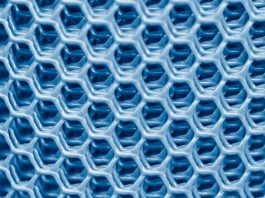Japanese scientists have developed a novel technique that employs mechanical force to transform existing generic polymers into luminescent polymers.
Devised by researchers from Hokkaido University, the innovative new method provides a simple process for turning generic polymers into luminescent polymers without the requirement of complex organic synthetic methods. The neoteric process can proficiently perform this effect on polymers such as polyethene and polystyrene and has a potentially wide range of applications.
Professor Hajime Ito, one of the authors of the study and Vice Director of the Institute for Chemical Reaction Design and Discovery (WPI-ICReDD) at Hokkaido University, said: “Luminescent polymers are widely used in modern society, in applications such as organic lasers, solar cells, sensors and bioimaging, but their preparation often requires multiple chemical synthesis steps, which are both time and labour-intensive.”
To combat this issue, the team examined if luminescent polymers could be prepared through the use of mechanical force instead of the traditionally used methods of sophisticated chemical synthesis.
Koji Kubota, an Associate Professor from Hokkaido University and co-author of the research, said: “It is well known that mechanically stimulating polymers, for example, by grinding or crushing them, generates reactive species called free radicals.
“Inspired by this phenomenon, as well as our previous research into mechanical-force-induced luminescence and reactions, we wanted to investigate whether we could find a simpler method for preparing functional luminescent materials.”
To conduct their study, the team combined the polymer and pre-fluorescent radical reactants in a ball milling jar containing stainless steel balls; the team then shook the jar to initiate a chemical reaction through the balls grinding the solid compounds. The covalent bonds in the polymer chains were cleaved through this technique, with the pre-fluorescent molecules then inserted into the polymer, which achieved a considerably higher emission intensity. This technique was then successfully demonstrated on polystyrene, polyethene, polyphenylene sulphide, polysulphone, and other generic polymers.
“With further development, the method could potentially be adapted to introduce other functions to generic polymers,” says Hokkaido University Assistant Professor Mingoo Jin.
“In the future, we hope to use this method to develop novel sensing and recording materials that change colour in response to mechanical stimuli,” commented Hajime Ito.
The scientists are optimistic that their method can revolutionise the production of smart materials for a wide range of applications, such as pressure-sensitive sensors and bioimaging reagents.









